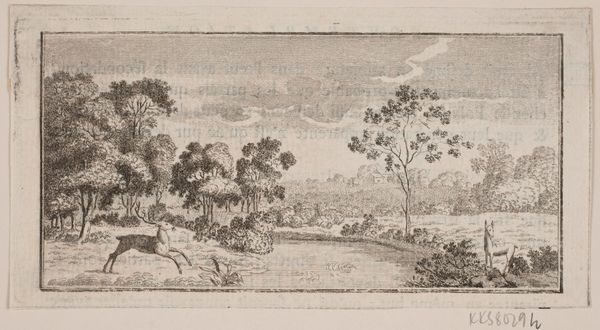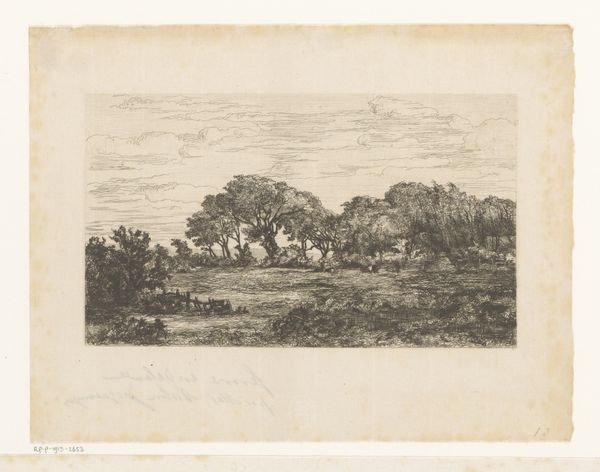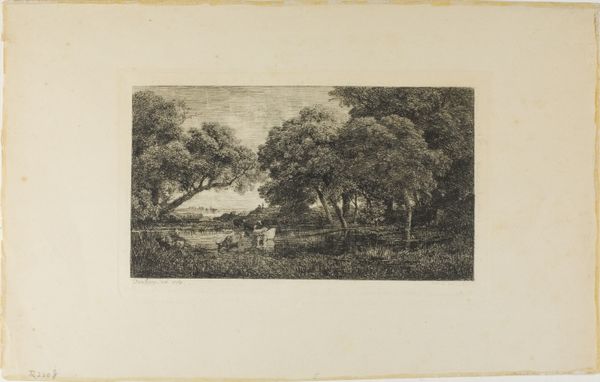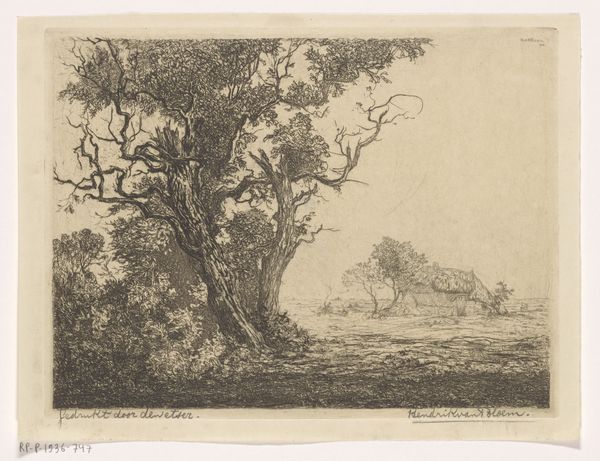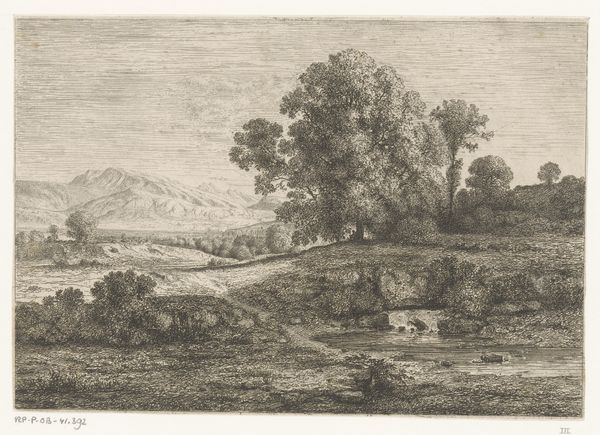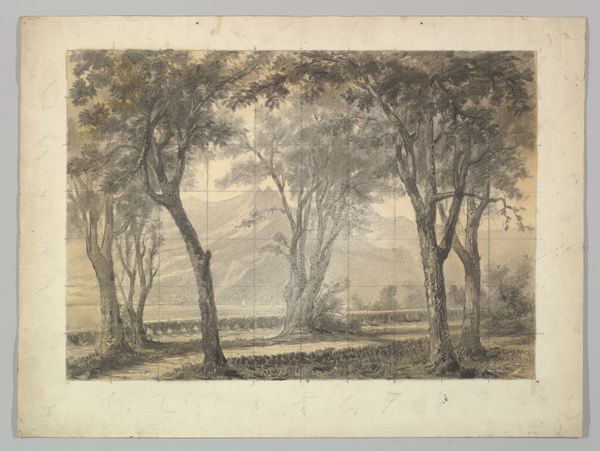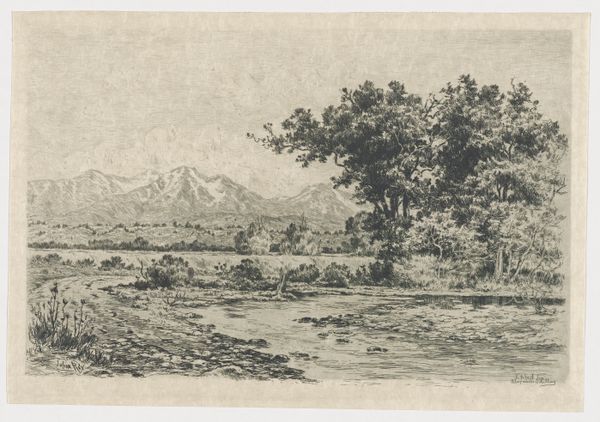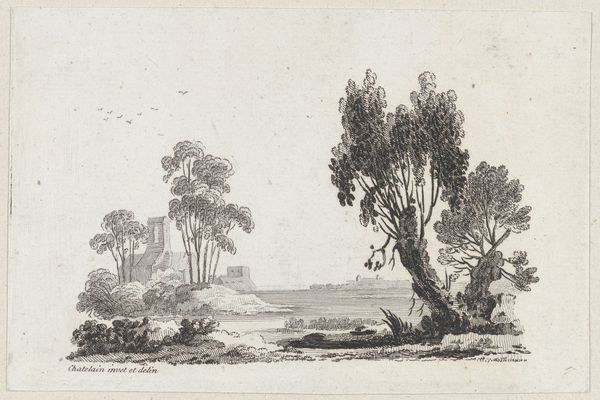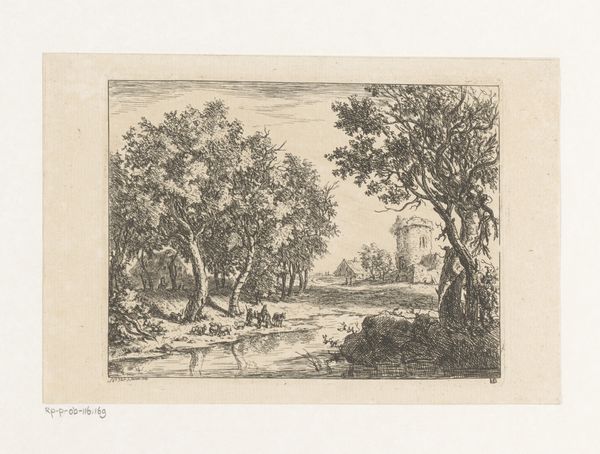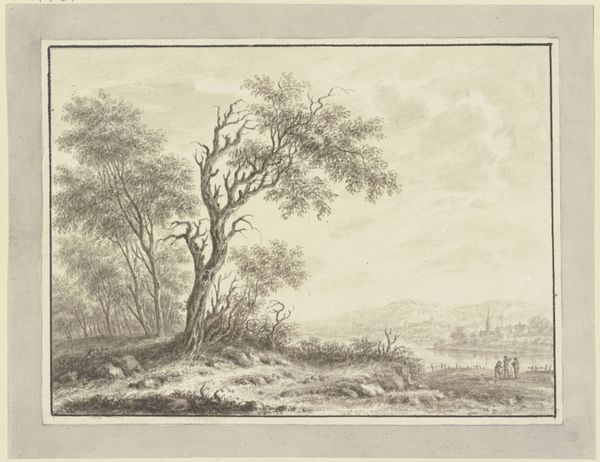
print, etching
# print
#
etching
#
landscape
#
realism
Dimensions: plate: 7.62 × 15.08 cm (3 × 5 15/16 in.) sheet: 19.69 × 27.94 cm (7 3/4 × 11 in.)
Copyright: National Gallery of Art: CC0 1.0
Curator: This is Henry Chapman Ford's "California Landscape," an etching from 1888. It's quite small, isn't it? Editor: Indeed. The fineness of the etched lines creates an atmosphere that almost feels dreamlike despite the overt realism. I can practically feel the dryness in the air just by observing it. Curator: The composition relies heavily on a series of horizontal planes—the foreground grass, the central open plain, and the distant mountain range, punctuated vertically by those trees with what looks like Spanish moss? Ford is definitely manipulating perspective through the tonal variations within each area, isn't he? Editor: The etching process, of course, demands considerable physical preparation. Think of the copper plate, the acid baths, and the physical pressure required for the printing process itself. Then consider the environment it depicts—the sun-drenched Californian landscape, rapidly transforming due to westward expansion. It connects artistic process, geographical specificity, and transformative labor in this period. Curator: That materiality of the copper plate almost mimics the dryness of the plains. I’m struck by how the foreground foliage serves almost as a curtain, framing the receding space. It pulls you in while simultaneously keeping you at bay, a nice counterpoint of implied perspectives. Editor: Yes, there's also an evident hierarchy at play. Etchings like these were frequently commissioned or sold to middle-class audiences. It's an aesthetic experience explicitly crafted for an emergent market of art consumers, mediating how land itself was being packaged for both consumption and development. Curator: A telling contrast, the untamed and yet the intimately accessible via reproducible technologies. I wonder about Ford’s intentions in making such stark value contrasts work together inside such a small-scale image. There’s the high level of detail versus the atmospheric effect from his choice of perspective... fascinating! Editor: For me, it is about remembering that landscapes like this were more than just picturesque views; they were material resources and a point of intense labor conflict in late 19th century California. A beautiful yet uneasy perspective emerges as we study it carefully. Curator: Food for thought indeed, thank you! Editor: Likewise. I’ll certainly be reflecting further on the labor and materiality underpinning such seemingly simple scenic beauty.
Comments
No comments
Be the first to comment and join the conversation on the ultimate creative platform.
